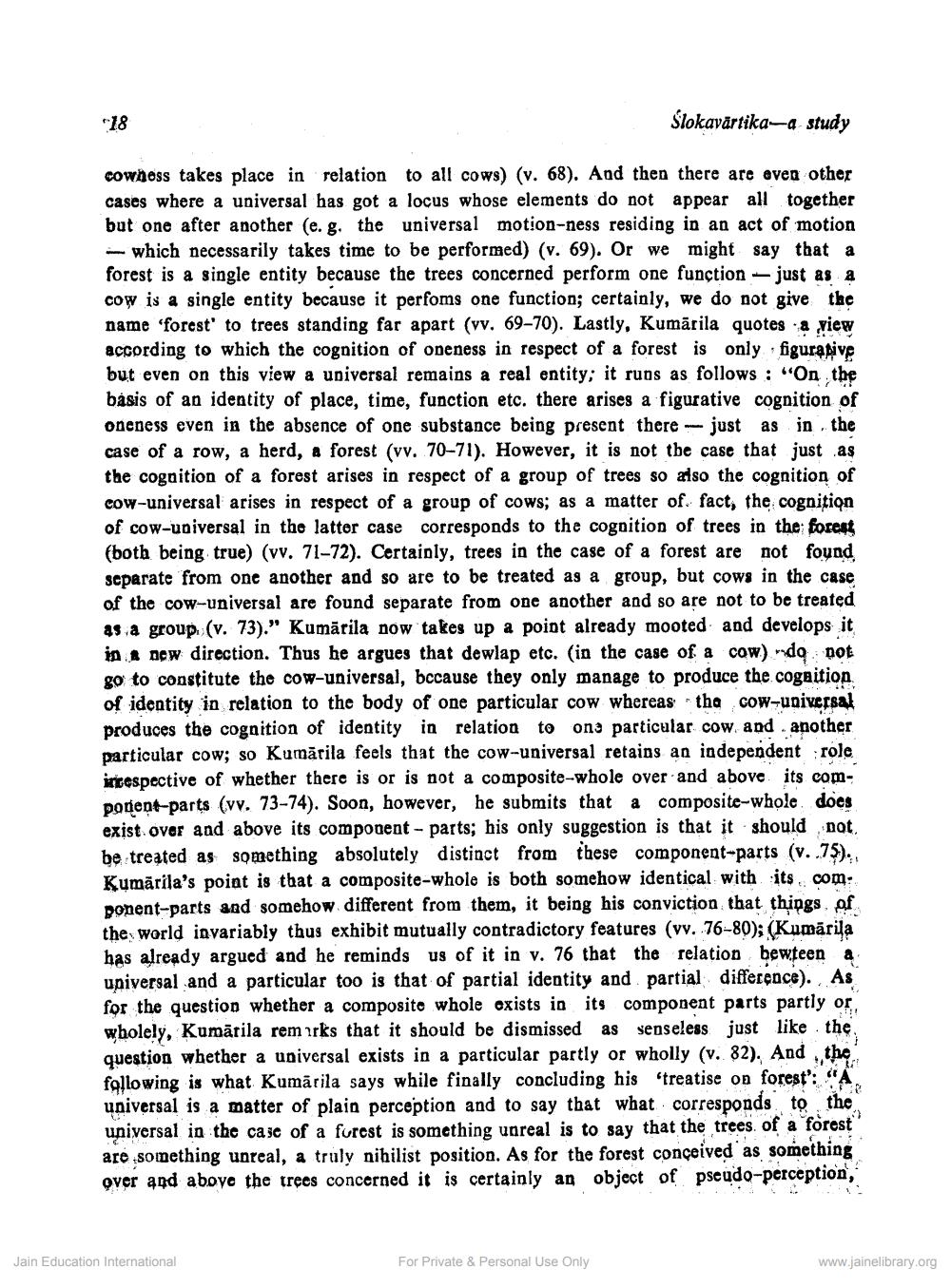________________
18
Slokavārtika—a study
cowboss takes place in relation to all cows) (v. 68). And then there are even other cases where a universal has got a locus whose elements do not appear all together but one after another (e. g, the universal motion-ness residing in an act of motion - which necessarily takes time to be performed) (v. 69). Or we might say that a forest is a single entity because the trees concerned perform one function - just as a cow is a single entity because it perfoms one function; certainly, we do not give the name 'forest' to trees standing far apart (vv. 69-70). Lastly, Kumārila quotes a view according to which the cognition of oneness in respect of a forest is only figurative but even on this view a universal remains a real entity; it runs as follows : "On the basis of an identity of place, time, function etc. there arises a figurative cognition of oneness even in the absence of one substance being present there -- just as in the case of a row, a herd, a forest (vv. 70-71). However, it is not the case that just as the cognition of a forest arises in respect of a group of trees so also the cognition of cow-universal arises in respect of a group of cows; as a matter of fact, the cognition of cow-universal in the latter case corresponds to the cognition of trees in the forest (both being true) (vv. 71-72). Certainly, trees in the case of a forest are not found separate from one another and so are to be treated as a group, but cows in the case of the cow-universal are found separate from one another and so are not to be treated as a group (v. 73)." Kumārila now takes up a point already mooted and develops it in a new direction. Thus he argues that dewlap etc. (in the case of a cow) do not go to constitute the cow-universal, because they only manage to produce the cognition of identity in relation to the body of one particular cow whereas tha cow-universal produces the cognition of identity in relation to ona particular cow, and . another particular cow; so Kumārila feels that the cow-universal retains an independent role intespective of whether there is or is not a composite-whole over and above its component-parts (vv. 73-74). Soon, however, he submits that a composite-whole does exist over and above its component - parts; his only suggestion is that it should not be treated as something absolutely distinct from these component-parts (v. 75). Kumārila's point is that a composite-whole is both somehow identical with its com: ponent-parts and somehow different from them, it being his conviction that things of the world invariably thus exhibit mutually contradictory features (vv. 76-80); (Kumarila has already argued and he reminds us of it in v. 76 that the relation bewteen a universal and a particular too is that of partial identity and partial difference). As for the question whether a composite whole exists in its component parts partly or, wholely, Kumärila remarks that it should be dismissed as senseless just like the question whether a universal exists in a particular partly or wholly (v. 82), And, the following is what Kumārila says while finally concluding his "treatise on forest': "A universal is a matter of plain perception and to say that what corresponds to the universal in the case of a furest is something unreal is to say that the trees of a forest are something unreal, a truly nihilist position. As for the forest conceived as something over and above the trees concerned it is certainly an object of pseudo-perception,
Jain Education International
For Private & Personal Use Only
www.jainelibrary.org




